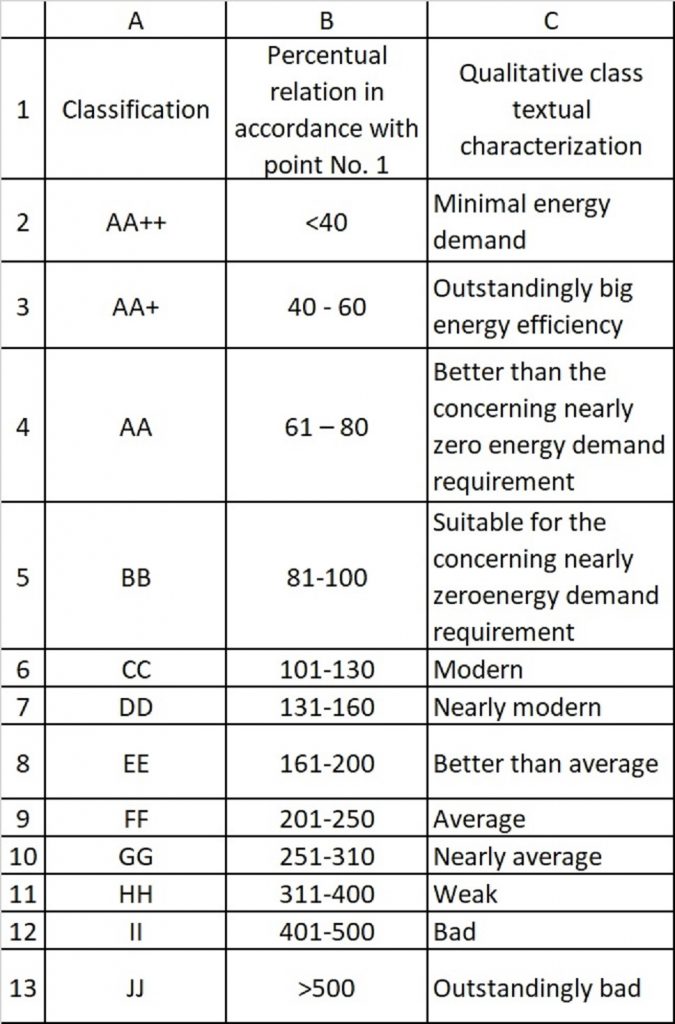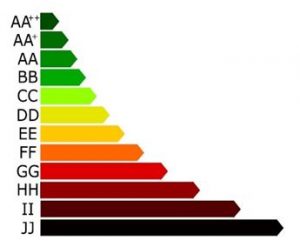Directive 2002/91/EC, which was issued by the European Parliament and the Council, made it compulsory that in 2006 the Member States must apply a system of common standards and a quality certification system to reduce energy consumption and ensure sustainable development.
The Hungarian regulation, which has been obligatory since 1 September 2006, is specified in the 7/2006. (V.24.) TNM regulation concerning the definition of the energetic characteristics of the buildings. The certification of the energetic characteristics of the building is issued according to the 176/2008 (VI. 30.) Government Decree. Inasmuch as the energetic quality classification cannot reach the required category, then we make recommendations on how the specific primer energy demand of the building changes in case of a comprehensive energy rationalization, and as a result how this can positively affect the energetic classification of the building.
Energetic certification is one of the most important tools to find out or to map out the state of a particular real estate or a building design from a heat engineering point of view. Hence the energy certificate is the new public document which shows the energy consumption efficiency of a building, whether the building is energy saving or wasteful. The energetic certification is valid for 10 years, or as long as the value requirements prevail.
Newly built buildings, functional facilities
As of 1 January 2009, obtaining the energetic certification before the start of the occupancy procedure is obligatory in accordance with the related 176/2008 (VI. 30.) Government decree.
In case of existing buildings, independent functional facilities, flats
The energetic certification is obligatory since 1 January 2012 in the following cases:
- ownership transfer as a result of payment exchange, or
- letting exceeding 1 year.
Official purpose state owned common buildings in common use
In case of official purpose state owned buildings in common use with over 1000 m2 useful floor area, getting the certification is also obligatory since 1 January 2009 regardless if the given edifice is newly built or existing.
There is no certifying requirement regarding the buildings below:
- a building under 50 m2 of useful floor area
- a building destined to be used for less than 4 months annually
- a building destined to be used for a maximum of 2 years
- a religious purpose building
- a building which has been declared a protected building under law or which is in a protected area under law (protected as a result of historic monuments or as a result of granted local architectural value protection)
- an agricultural purpose building
- in case of a building where the internal heat gain derived from technology during the period of intended use is over 20W/m3, or where more than twenty air exchanges are necessary, or emerge, during the heating season
- a workshop purpose building
- air inflated, or stretched tent structures which are intended for human stay for an extended period of time.
The goal of energetic certification
The goal of energetic certification is to define the current energy consumption of a building by calculation methods and to compare that with the existing benchmarks in accordance with the 7/2006 (V.24.) TNM regulation, and to rate on a letter scale the energetic classification of the building based on the percentile scale specification introduced in the 176/2008 (VI. 30.) Government Decree.
 |
 |
In connection with the energetic certification for tender documents of foreign modern building-rating systems, we provide supporting work sections in English to maximize the obtainable points with the engineering systems:
- BREEAM
- LEED
- WELL
- DVGW CERT
 |
 |
 |
 |



